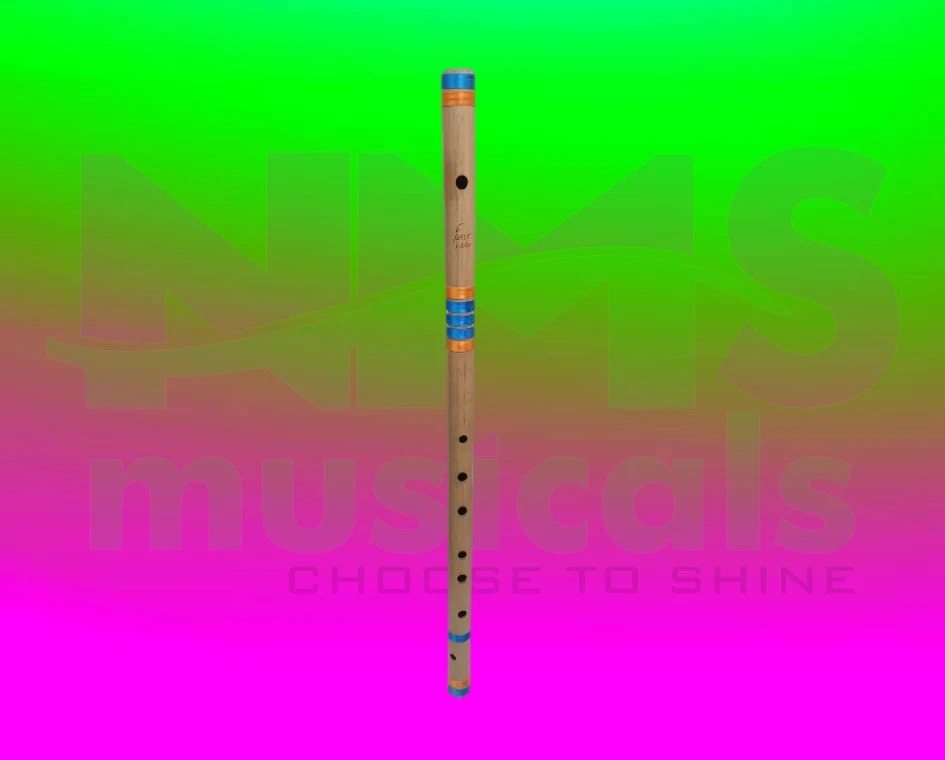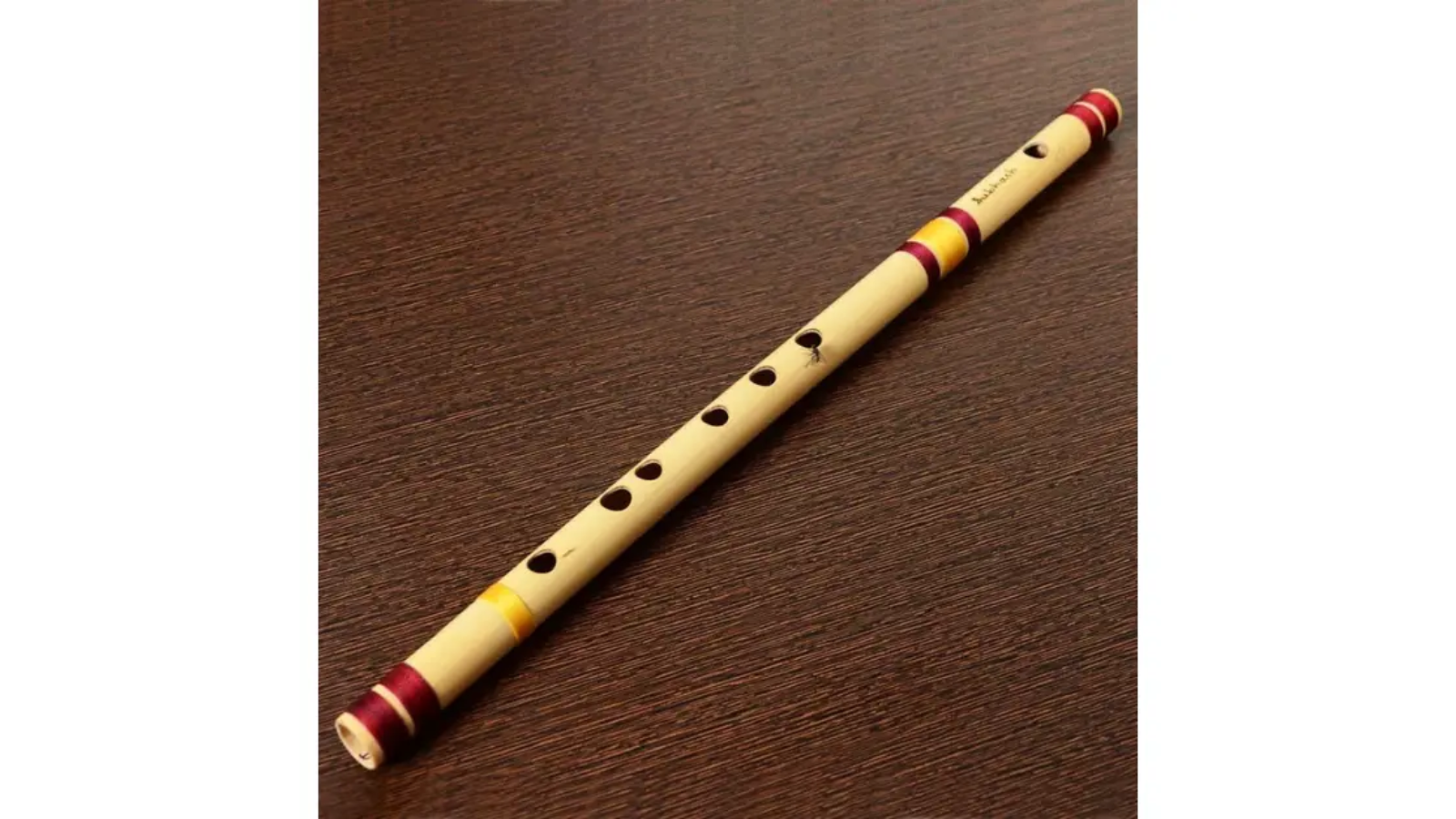Your complete beginner’s guide to how to play the flute for beginners

Learning how to play the flute and what you need to know as a beginner is an exciting journey filled with rhythm, melody, and soul. The flute is one of the most ancient and spiritual instruments in Indian music, known for its soothing tone and expressive range. Whether you’re exploring the bansuri in Hindustani music or the venu in Carnatic traditions, this guide will walk you through everything from choosing the right flute to mastering your first ragas. Let’s dive into the basics of becoming a confident and joyful flute player.
1. Understanding the Flute: Western vs. Indian Flutes
There are two main types of flutes beginners encounter: Western metal flutes and Indian bamboo flutes.
- Western concert flute: Typically made of metal, suited for Western classical or pop.
- Indian flutes: Includes bansuri (Hindustani) and venu (Carnatic), made of bamboo with a rich, earthy tone.
If your focus is on Indian music, the bansuri or venu is the perfect starting point.
2. Choosing the Right Flute for Beginners
Picking the right flute depends on your comfort, budget, and learning goals.
- For absolute beginners: Choose a medium-length flute (C scale or E base).
- Material: Indian flutes are traditionally bamboo—lightweight and warm in tone.
- Finger spacing: Shorter flutes (like G or A) are easier to handle for small hands.
Buy from reputed Indian brands like Punam Flutes, Subhash Flutes, or Harshwardhan Flutes for quality assurance.
3. Learning the Flute: What You Need to Start
Before you begin playing, gather these basic items:
- A good-quality beginner bamboo flute
- Tuner app (like Tanpura Droid or NaadSadhana)
- Soft cloth for cleaning the flute
- Metronome or rhythm app for tala practice
These tools help you stay in tune and practice rhythmically from day one.
4. How to Hold and Blow Into the Flute Properly
This is the first major challenge for beginners.
- Posture: Sit upright or stand straight.
- Grip: Use your left hand on the top holes and right hand on the bottom.
- Blowing technique: Your lower lip should rest on the blow hole. Blow gently across it—don’t force air into it.
Practice finding the sweet spot where the flute produces a clear tone. Patience is key.
5. Understanding Swaras and Indian Notes
Indian classical music uses swaras, or notes, as the foundation for ragas. These are:
- Sa, Re, Ga, Ma, Pa, Dha, Ni (like Do-Re-Mi in Western music)
Each scale on your flute corresponds to a different set of swaras. Beginners typically start with the C scale or E base flute, which allows for easier practice of basic ragas.
6. First Practice: Sa to Pa on the Flute
Your first lesson will be playing from Sa to Pa:
- Cover the appropriate holes
- Blow gently and hold each note
- Practice ascending (Aaroh) and descending (Avaroh)
Start with a slow tempo and increase as you gain control over breath and finger movements.
7. Introduction to Basic Ragas for Beginners
Learning ragas builds your melodic understanding. Beginner-friendly ragas include:
- Raga Bhoopali (Hindustani)
- Raga Mohanam (Carnatic)
- Raga Yaman (after some practice)
These ragas are pentatonic and easy to learn. They don’t use complex note shifts, making them ideal for early mastery.
8. Finger Placement and Movement Tips
- Don’t press too hard—just enough to close the hole.
- Practice meend (slides) and gamaka (ornamentation) slowly.
- Keep your hand relaxed and avoid overextending fingers.
Good technique ensures clarity and expression in your music.
9. Breathing Techniques for Better Sound
Controlling breath is crucial:
- Use abdominal breathing for longer notes.
- Avoid shallow or forced breathing.
- Take silent breaths between phrases.
Use simple exercises like holding Sa for 8 seconds and gradually increasing your endurance.
10. Building a Daily Practice Routine
Create a routine you can stick to:
- Warm-up: 5 mins of blowing exercises.
- Swaras: 10 mins of scale work.
- Ragas: 15 mins learning one raga.
- Improvisation or Jamming: 5-10 mins free play.
Practice with a tanpura app or tabla loop to build rhythm and tonal awareness.
11. Learning from a Guru vs. Online Classes
While online tutorials are helpful, Indian classical music thrives through personal teaching (guru-shishya parampara). If possible:
- Learn from a trained flautist.
- Attend local music classes or workshops.
- Use platforms like YouTube or Udemy for extra practice.
Hybrid learning (both in-person and online) often works best.
12. Indian Flute in Modern and Fusion Music
Flutes are not just for classical—many Indian musicians use them in:
- Bollywood background scores
- Indie-fusion bands
- Devotional albums
- Film soundtracks and electronic music
Explore artists like Rakesh Chaurasia, Pravin Godkhindi, and Nagaraju Talluri for inspiration.
13. Mistakes Beginners Should Avoid
- Blowing too hard and creating a shrill tone
- Holding the flute incorrectly
- Skipping basic swara practice
- Ignoring tuning and breath control
- Using a flute that’s too long or difficult
Stay patient and focus on one step at a time.
14. Best Indian Flutes for Beginners
Some great beginner options in India include:
- Punam Flutes C Medium
- Harshwardhan Flutes E Bass
- Subhash Flutes G Sharp
They are known for professional tuning, good resonance, and affordability.
15. Budget Guide for New Learners
A decent Indian bamboo flute ranges between ₹700 and ₹2000. Add ₹300-500 for accessories like cleaning cloth, flute stand, and carry case. Beginners don’t need to spend more than ₹2500 initially.
16. Joining Indian Flute Communities
Being part of a community helps you stay motivated. Join:
- Facebook groups like “Flute Learners of India”
- Subreddits like r/IndianClassicalMusic
- WhatsApp or Telegram groups for flute practice tips
These are excellent platforms to get advice and connect with others on the same path.
17. Tips for Practicing Ragas on the Flute
- Break down each raga into 3-note and 5-note patterns.
- Practice with a tabla loop to develop rhythm.
- Sing the raga before playing—this improves tone memory.
- Use apps like NaadSadhana for real-time feedback and tuning.
Practice patience. Even advanced players spend hours repeating the basics.
18. Recording and Improving Your Playing
Recording your practice is the fastest way to improve.
- Use your phone or a basic microphone.
- Listen to your tone, breath control, and transitions.
- Compare recordings weekly to track your progress.
Make it a habit to record once a week and listen critically.
19. Exploring Different Indian Flute Styles
- Hindustani Style (North India): Emphasizes long notes, microtones, and mood.
- Carnatic Style (South India): Faster phrases, intricate gamakas, and rhythmic compositions.
- Contemporary Fusion: Blends classical with modern sounds using effects or background scores.
Try both styles to expand your musical vocabulary.
20. Staying Inspired on Your Flute Journey
Watch live concerts, listen to flute renditions of your favorite ragas, and challenge yourself with new compositions. Music is not just a skill—it’s a spiritual and emotional experience in Indian tradition. Let the sound of your flute express the beauty within.
Conclusion
Learning how to play the flute and what you need to know as a beginner can seem overwhelming at first—but with patience, practice, and the right guidance, anyone can begin their journey. Indian flutes like the bansuri and venu hold deep cultural and musical significance, offering a soulful and meditative sound that connects directly with the heart. Focus on your breath, enjoy your progress, and allow the melodies you create to grow alongside you. Whether you’re playing a morning raga or jamming along with friends, your flute will become your companion in a lifelong musical exploration.
At NMS Musicals, we offer a comprehensive range of musical instruments, including percussion, string, wind, and keyboard instruments. Our services encompass sales, expert servicing, and the manufacture of leather instruments. Explore our diverse collection and find the perfect instrument to suit your musical needs.
Visit our website to browse our offerings: nmsmusicals.in
For a closer look at our products, check out our shop page: nmsmusicals.in/shop
Stay connected with us through our social media channels:
- Facebook: https://www.facebook.com/nmsmusicalinstruments/
- Instagram: https://www.instagram.com/nmsmusicals/?hl=en
- YouTube: youtube.com/@nmsmusicals
Our shop locations are:
- Puducherry: 149, Perumal Koil Street, Heritage Town, Puducherry, 605001.
Map Link: https://maps.app.goo.gl/ejDwBBFEJmd3szxk7 - Chennai: No: 1, 1st Floor, Kandigai Street, TVS Nagar, Korattur, Chennai – 600076.
Map Link: https://maps.app.goo.gl/7oXmB6X7KQsqeuuw9
For inquiries, contact/Whatsapp us at 9500663895 or email us at laxman.m89@gmail.com.
Discover the world of musical instruments with NMS Musicals today!
For a visual overview of our percussion instruments, watch the following video:


 Cart is empty
Cart is empty 
Leave A Comment
You must be logged in to post a comment